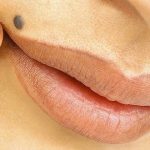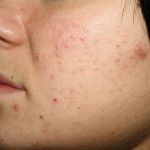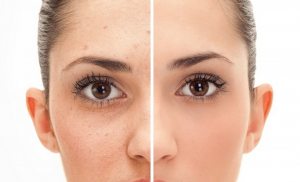 Scars can occur as a result of any skin trauma – a burn, a cut, an operation and even a pimple. Scars are formations of connective tissue that are formed as a result of restoring the integrity of injured tissues. The cause of scar appearance is severe skin lesions. This can happen because of punctures, injuries, skin burns, and also due to surgery. Scars are a defective tissue, which consists of collagen fibers. It is formed on the site of the damaged dermis.
Scars can occur as a result of any skin trauma – a burn, a cut, an operation and even a pimple. Scars are formations of connective tissue that are formed as a result of restoring the integrity of injured tissues. The cause of scar appearance is severe skin lesions. This can happen because of punctures, injuries, skin burns, and also due to surgery. Scars are a defective tissue, which consists of collagen fibers. It is formed on the site of the damaged dermis.
On such a surface there is no sebaceous and sweat glands, there is also no hair covering. There are few vessels and nerve endings on the site of the scar. In the scar area, there are no skin patterns, in this place the skin is absolutely smooth and even.
Fortunately, today there are a huge number of methods to get rid of them. However, first you will have to understand what kind of a scar you have. Due to a number of factors (individual reaction of an organism, depth of damage, etc.) they don’t look identical. For example, normotrophic scars are whitish, flat and do not change the skin relief. Atrophic – flabby, located below the surrounding tissues. Hypertrophic scars, in contrast, protrude above the surface of the skin and usually have a pink tinge. Keloid, as a rule, strongly protrude: they are clearly delineated, elastic, with uneven surface. From the remaining scars they are characterized by the ability to permanent growth, as a result of which the scar volume can several times exceed the size of the wound.
Contents
- Method number 1: Natural remedies
- Method number 2: Salon procedures
- Method number 3: Creams and ointments
- Method number 4: Operational methods
- Video
Method number 1: Natural remedies
 If you don’t have a chance to go to the hospital and use some expensive cosmetology methods to get rid of annoying scars, which spoil the beauty of your face or body it is possible to use natural remedies preparing them from simple ingredients, which you can find at hand. There is a collection of effective natural remedies you can choose from:
If you don’t have a chance to go to the hospital and use some expensive cosmetology methods to get rid of annoying scars, which spoil the beauty of your face or body it is possible to use natural remedies preparing them from simple ingredients, which you can find at hand. There is a collection of effective natural remedies you can choose from:
Nutmeg
Nutmeg is famous for its miraculous properties. Grind the nutmeg, mix it with milk or honey 1: 2 or 1: 3. Apply on the scar for 30 minutes, and then rinse with water. During the first weeks you will notice the first results. This remedy is especially effective for deep scars.
Melon seeds
To get rid of scars, often use melon seeds. They need to be dried, cleaned and crushed. Then the seeds are mixed with the crushed eggshell. Add olive oil. The resulting gruel is applied to the scar, covered with a bandage. You need to do this every day for 20 days, after 2-3 weeks you can repeat this rite.
Ointment of Vishnevsky
It is sold in pharmacy, it has good healing properties. To make a mask, you need to take half a teaspoon of honey, a tablespoon of vodka and add a touch of Vishnevsky’s ointment, literally at the tip of the knife. All carefully mix, spread on the cabbage leaf and cover up the place of the scar, fixing all the gauze bandage. It should be left for 30 minutes, repeated every day or every other day, it is not recommended to apply in summer, since the combination with ultraviolet rays is incompatible.
Blue clay
It is an excellent assistant in the fight against scars of various species. It should be mixed with water, put on a gruel on the problem area of the skin, let it dry, then gently rinse with water.
A mixture of honey and vegetable oils
Such mixture will help in the healing of early scars. You can take any oils, add a few drops of scarlet and a small amount of honey. For the best effect, it is better to warm the mask obtained on a slow fire, apply to the skin in a warm form for 15-30 minutes, then rinse with warm water.
Pea dough
Dissolve warm milk pea flour in a ratio of 1/1. Use this mixture to make a compress and leave it for at least 1 hour. Continue doing this daily until the scar disappears.
Cabbage leaf
Cabbage has long been known for its anti-inflammatory and wound-healing properties. It is very rich in vitamin E, which allows it to exert a great influence on the regeneration of the skin. Grind 2-3 cabbage leaves to form a gruel, mix with a tablespoon of honey. From this mass, make a compress and leave for 2 hours. Do these compresses twice a day until the scar disappears.
Remember that it is best to start treatment for scars as soon as possible from the time they appear. Old scars removed with the help of folk remedies are almost impossible, but aesthetic medicine can help in this.
Wax and olive oil
Pour 200 ml of olive oil into a small saucepan and add 50 grams of good beeswax there. Boil this mixture over low heat for 10 minutes. Cool the oil and soak the tissue. Make a compress on the scar. Repeat the procedure twice a day for at least two months.
Oily extract of satin flower
Fresh grass of the satin flower should be poured over with refined sunflower oil, so that it well permeated the grass, put on the bottom shelf of the refrigerator for two weeks. After the extract is ready, pour the oil into another glass container and store it for no more than six months. Make compresses on the affected area for 20 minutes every day.
Oily extract of St. John’s wort
If the keloid scar causes pain, prepare an extract from the fresh herb of St. John’s wort by the previous recipe. Compresses should be done twice a day.
Ointment from Japanese saphora
Mix 500 ml of chopped fruit of Japanese saphora and 500 ml of goose fat to make an ointment. In order that the ointment is ripe, you need to warm it for an hour in a water bath for four days in a row, each time removing the ointment in the refrigerator until the next time. On the fifth day, apply the preparation to a linen cloth or bandage, and attach to the scar. Continue to apply daily ointment on the scar, before it disappears.
Camphor oil
Camphor compresses are very helpful. The oil should be soaked in gauze and applied overnight to the scar. Usually within a month there will be a good effect.
The root of the althaea
The root of althaea has anti-edematous, anti-inflammatory and resorptive action. Therefore, it is highly effective against scars on the skin. Cooking infusion is easy: 1 tablespoon of althea root is crushed, poured a glass of cold water and insisted for 8 hours. Then you need to lubricate the infusion of the infusion 4-6 times a day for a long time. Instead of the root of the althaea, mint can be used. Infusion of mint is well applied before the ointment, as it softens scar tissue and helps the ointment to absorb better.
Aloe plus Vitamin E
The healing properties of this plant can affect the appearance of the scar. Regular application of aloe gel will help restore the skin and reduce the scar.
Vitamin E contributes to the regeneration of the skin, the formation of collagen, improving the appearance of the scar. Apply it several times a day. In addition, the daily menu should include this vitamin (almonds, hazelnuts, vegetable oils).
Apple cider vinegar
Soak a cotton disc in vinegar and apply to the scar for 10 – 15 minutes, then rinse with water. The acids contained in apple cider vinegar help remove the dead skin cells from the scar promoting regeneration. Apply 3 times a day.
Important: You should remember that natural remedies can be helpful when you use them for not very old scars. If you have had a scar for a long time, it is more effective to use cosmetology or surgery.
Back
Method number 2: Salon procedures
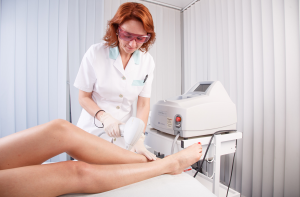 Cosmetologists may help you make even old scars almost invisible using the following effective methods:
Cosmetologists may help you make even old scars almost invisible using the following effective methods:
Microdermabrasion
This is a method of removing normotrophic scars. The procedure involves layer-by-layer removal of the upper layer of the epidermis to the level of the surrounding skin. Visible changes are noticeable in the case of treatment beginning within 6 months after scar formation. The recommended course is 5-7 procedures with an interval of 1 month.
Chemical peeling
This is a softening and thinning of the scar by highly concentrated preparations. It is effective against atrophic and weak hypertrophic scars. The course consists of at least 2 procedures, conducted at intervals of 1-2 months. The most intense effect on the scar is phenolic and trichloroacetic peelings.
Injection correction
Scars buried in the skin can be filled with collagen, hyaluronic acid-based preparations, fatty tissue. The result of this contour plastic is instantaneous, but short-lived. “Fillers” dissolve within 3-12 months and are excreted from the body. To remove hypertrophic scars use prolonged corticosteroids – Kenalog and Diprospan. The drug is introduced into the thickness of the scar 10-12 times (injection every 3-4 weeks). Sometimes in a place of a nyxis the pigmentation of a skin changes. Such injections are mainly used to remove hypertrophic scars.
Laser scar removal
This is the most effective and popular method for getting rid of hypertrophic and atrophic scars. Its essence lies in the laser making a lot of holes and evaporating the scar tissue. The laser removes suicide scars, scars from chickenpox and traces of post-acne. The experts do not have a unanimous opinion as to which of the lasers is preferable. Some believe that CO2 better affects deep hypertrophic and atrophic scars, while others note that after resurfacing like this skin resurfacing in Bay City, MI or skin resurfacing in Apollo Beach, FL, the skin heals faster and fewer complications occur. You can consult experts that do skin resurfacing in Vienna, VA for additional guidance. In any case, these procedures are non-contact, so the wound is obtained sterile.
Cryodesctruction
Perhaps you will be surprised but some scars – keloid and hypertrophic – can be frozen. This method is called cryodestruction. The procedure is as follows: a special applicator is wetted in a cooling medium (liquid nitrogen is usually used) and then pressed several times against the rumen until an icy frost is formed around it.
The phases of freezing and thawing are very painful, therefore the operation is performed under anesthesia. After deep cooling, the treated area of the skin strongly swells, becomes wet and looks like a burn bladder. After a few days, it is covered with a dry crust, which in most cases disappears after a week. In place of the scab you can see a pink scar, which eventually becomes almost invisible.
This method can be combined with injections of steroids. Cryodestruction is not used in the case of large keloid scars.
Important: If you want to use one of the above mentioned procedures you are recommended to get a consultation of your healthcare specialist and be ready that all those procedures are not cheap.
Back
Method number 3: Creams and ointments
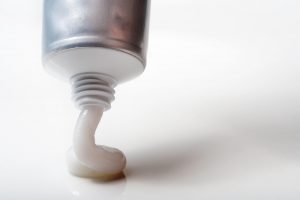 The ointment against scars is a relatively inexpensive way to reduce the visibility of skin imperfections. The pharmacological industry produces creams and ointments, in the description of which it is stated that they are able to help you get rid of scars. You are unlikely to get rid of existing scars in this way immediately but the regular application may be helpful. Scars will become slightly less noticeable.
The ointment against scars is a relatively inexpensive way to reduce the visibility of skin imperfections. The pharmacological industry produces creams and ointments, in the description of which it is stated that they are able to help you get rid of scars. You are unlikely to get rid of existing scars in this way immediately but the regular application may be helpful. Scars will become slightly less noticeable.
Such aids help at the time of scar formation very well. If you start using them immediately after surgery, then there is a high probability that the postoperative scar will be almost invisible. Usually such creams contain the active substances in like:
- onion extract,
- hyaluronic acid,
- allantoin.
There is also a technique for treating keloid scars with pressure bandages with corticosteroid creams. The course of this treatment makes it possible to make keloids more flat.
When are you recommended to use ointments from scars?
There are the following indications for the use of ointments from scars:
- Keloid scars: caused by traumatic injury, burns (high temperature of water, steam or chemicals), surgical interventions. The difference between these scars is an elevation above the level of skin and growth outside the primary lesion.
- Hypertrophic scars: occur exclusively at the site of the primary lesion without involving the surrounding tissues, and may even diminish in size over time;
- Ankylosis with decreased mobility of joints;
- Contractures of tendons due to the impact of a traumatic factor;
- Stretch marks obtained in the process of bearing a fetus or a rapid loss of extra pounds;
- Atrophic scars, resulting from long-term healing of boils or common acne;
- Preventive measures to prevent the appearance of scar formation after surgical intervention.
Important: Each cream and ointment from scars may have certain contraindications. Be careful when choosing the one.
Back
Method number 4: Operational methods
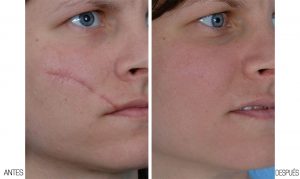 One of the most radical ways to deal with scars is to go to the surgeon. This method is suitable for correction of all types of scars, except keloid ones. The latter often give relapses. If the scar is not wide, it can be excised and an intradermal cosmetic suture applied. As a result, only a barely noticeable threadlike trace remains from the scar. From scars of impressive size one can get rid of by plastic with skin graft. The damaged area is excised and a skin flap taken from the patient’s healthy area is placed in its place.
One of the most radical ways to deal with scars is to go to the surgeon. This method is suitable for correction of all types of scars, except keloid ones. The latter often give relapses. If the scar is not wide, it can be excised and an intradermal cosmetic suture applied. As a result, only a barely noticeable threadlike trace remains from the scar. From scars of impressive size one can get rid of by plastic with skin graft. The damaged area is excised and a skin flap taken from the patient’s healthy area is placed in its place.
As an alternative method, operations with silicone bags, or tissue expanders, are done. Such a design is sewed under the skin next to the scar and periodically added to it a sterile physiological solution to increase the volume. The pouch grows, and along with it the skin also stretches. When sufficient surplus of healthy tissue is formed, the slip is removed, the scar is excised, and the edges of the skin are stitched.
So there are the following types of operational methods:
- Surgical excision of the scar with superposition of the intradermal cosmetic suture;
- Skin plastic (with a change in the contours of the scar or skin transplantation);
- Dermotension (sewing under the skin next to the scar tissue expander stretching the skin, the formed excess tissue after the removal of the scar stitch).
Such methods have their pros and cons.
Pros of surgery:
- The operation makes scars less visible, before which other methods are powerless;
- Local anesthesia is enough.
Cons of surgery:
- Distant outcome (after 3-6 months);
- Possible relapse and an increase in the scar in size;
- There is a new, less noticeable scar.
Important: This method is recommended in cases when the scar is very coarse and large as well as in case of burn scars.
Back




